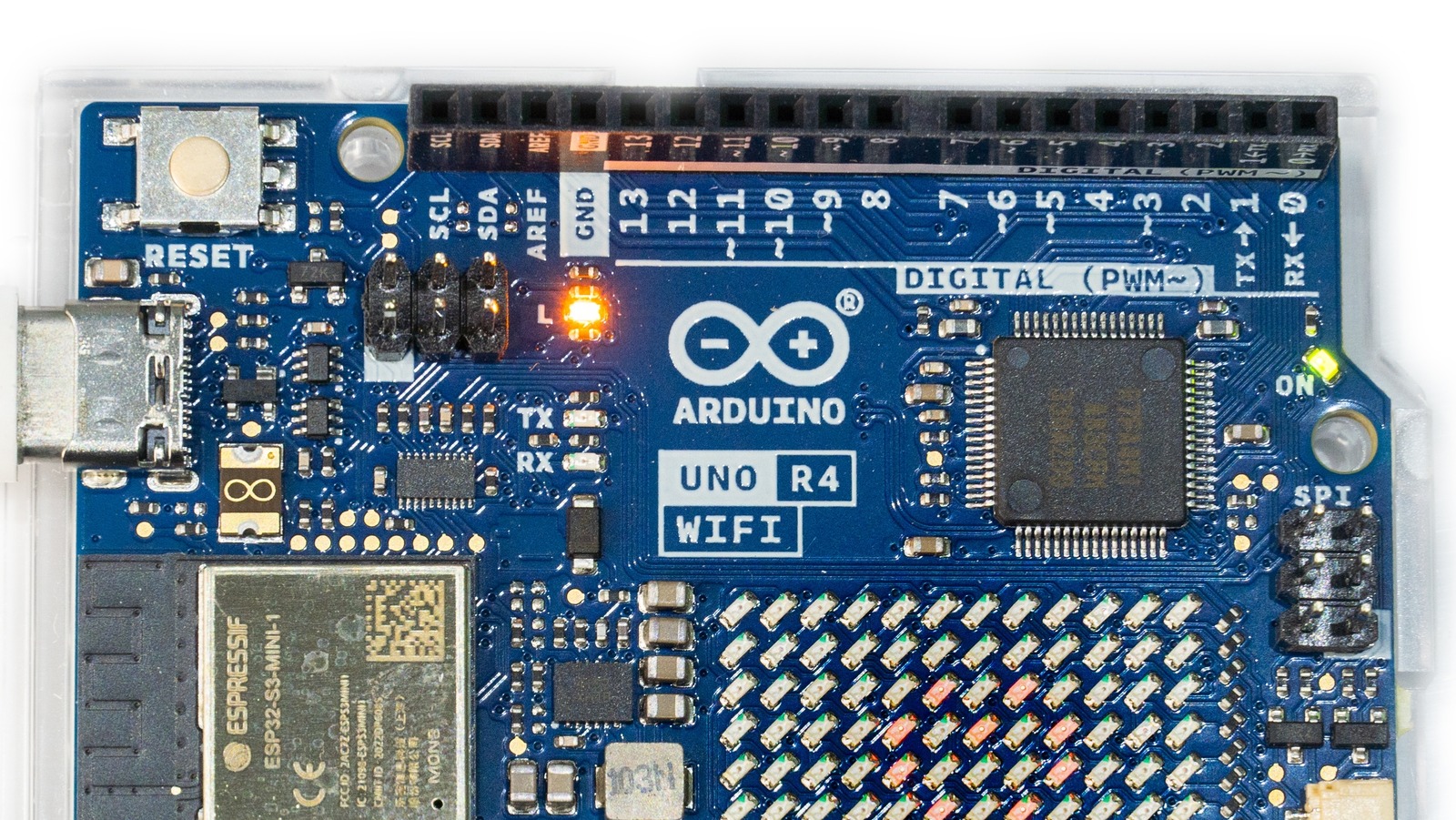One of the most significant differences between the classic Rev3 and Uno’s more recent iteration, the R4 WiFi, is the microcontroller. This component is the brain of the board and is what gives the Uno its computational power. For the Rev3, the microcontroller is an ATmega328P. It’s an 8-bit AVR microcontroller running at a clock speed of 16 MHz and boasts a flash memory of 32 KB, 2 KB of SRAM, and a 1 KB EEPROM. Despite these modest specifications, the Rev3 can handle a wide range of tasks, from beginner projects like an Arduino-powered automatic plant watering system to more complex applications like a self-balancing mobile robot.
The R4 WiFi, on the other hand, is fitted with a Renesas RA4M1, a 32-bit Arm microcontroller. It operates at three times the speed of the Rev3 (48 MHz) and offers a massive upgrade in memory, with 256 KB of flash memory, 32 KB of SRAM, and 8 KB EEPROM. This means the board is highly suitable for more advanced and demanding projects with more code — think web-based home automation systems or a ground station monitor and control for a QO-100 satellite terminal.
On top of the differences in the technical specifications, what also makes the microcontrollers of the Rev3 and R4 WiFi distinct from each other is how they’re connected to their respective boards. On the Rev3, the chip sits in a Dual In-line Package (DIP) socket, making it readily replaceable. On the R4 WiFi, the chip is soldered on the board, so if it gets damaged, you will need to desolder it manually.







